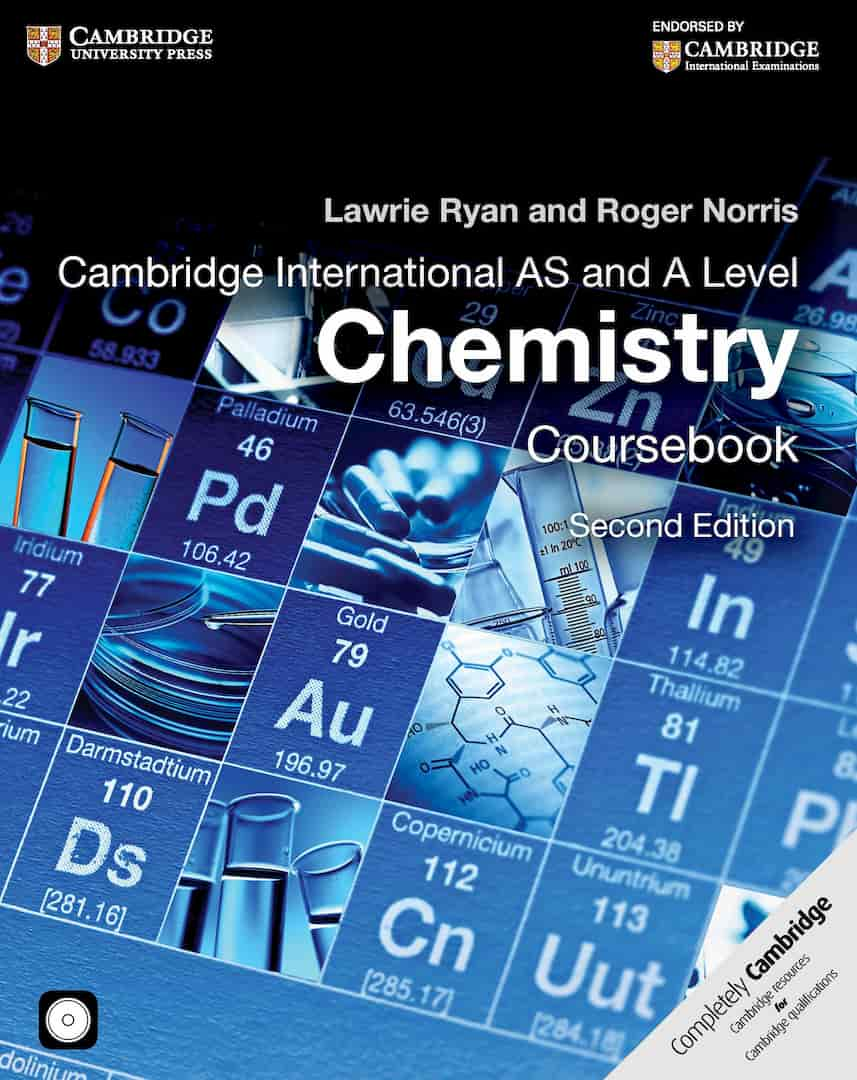Lawrie Ryan and Roger Norris
Cambridge International AS and A Level
Chemistry
Coursebook
Second Edition
How to use, A Level Chemistry – Cambridge International AS and A Level?
- Each chapter begins with a short list of the facts and concepts that are explained in it.
- There is a short context at the beginning of each chapter, containing an example of how the material covered in the chapter relates to the ‘real world’.
- This book doesn’t contain detailed instructions for doing particular experiments, but you’ll find background information about the sensible work you would like to do in these boxes. There are also two chapters, P1 and P2, which provide detailed information about the sensible skills you would like to develop during the course.
- Important equations and other facts are shown in highlight boxes.
- Questions throughout the text give you a chance to check that you have understood the topic you have just read about. You can find the answers to these questions on the CD-ROM.The text and illustrations describe and explain all of the facts and concepts that you need to know. The chapters, and oft en the content within them as well, are arranged in the same sequence as in your syllabus.
- Wherever you would like to understand the way to use a formula to hold out a calculation, there are worked example boxes to point out you ways to try to to this.
- Definitions that are required by the syllabus are shown in highlight boxes.
- Key words are highlighted in the text when they are first introduced.
- You will also find definitions of these words in the Glossary.
- There is a summary of key points at the end of each chapter. You might find this helpful when you are revising.
- Questions at the top of every chapter are more demanding exam-style questions, some of which may require use of knowledge from previous chapters. Answers to these questions can be found on the CD-ROM.
A Level Chemistry – Cambridge International AS and A Level: Table of Content
Chapter 1: Moles and equations
Chapter 2: Atomic structure
Chapter 3: Electrons in atoms
Chapter 4: Chemical bonding
Chapter 5: States of matter
Chapter 6: Enthalpy changes
Chapter 7: Redox reactions
Chapter 8: Equilibrium
Chapter 9: Rates of reaction
Chapter 10: Periodicity
Chapter 11: Group 2
Chapter 12: Group 17
Chapter 13: Nitrogen and sulfur
Chapter 14: Introduction to organic chemistry
Chapter 15: Hydrocarbons
Chapter 16: Halogenoalkanes
Chapter 17: Alcohols, esters and carboxylic acids
Chapter 18: Carbonyl compounds
Chapter P1: Practical skills 1
Chapter 19: Lattice energy
Chapter 20: Electrochemistry
Chapter 21: Further aspects of equilibria
Chapter 22: Reaction kinetics
Chapter 23: Entropy and Gibbs free energy
Chapter 24: Transition elements
Chapter 25: Benzene and its compounds
Chapter 26: Carboxylic acids and their derivatives
Chapter 27: Organic nitrogen compounds
Chapter 28: Polymerisation
Chapter 29: Analytical chemistry
Chapter 30: Organic synthesis
Chapter P2: Practical skills 2
Appendix 1: The Periodic Table of the Elements
Appendix 2: Selected standard electrode potentials
Appendix 3: Qualitative analysis notes







